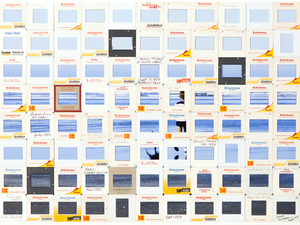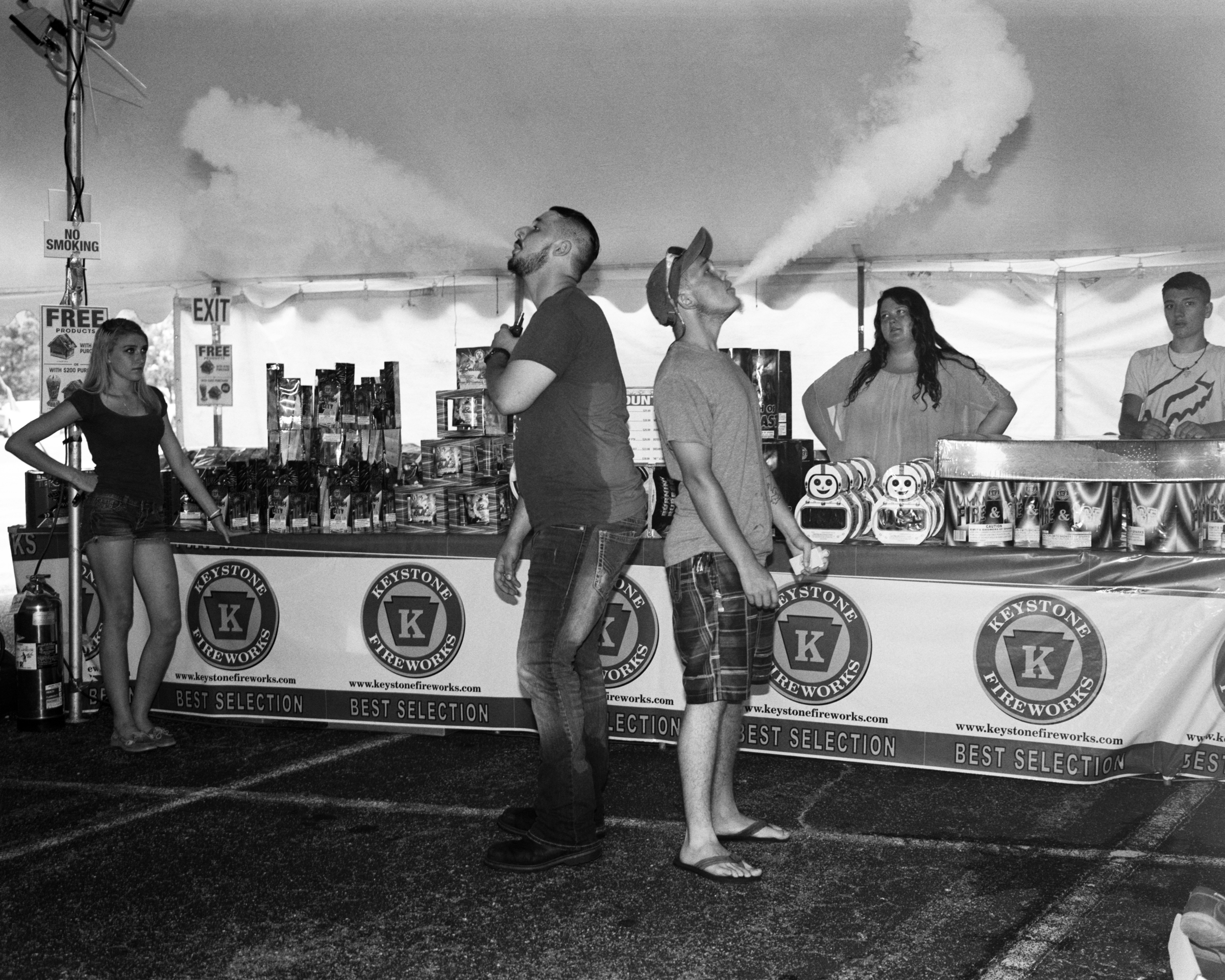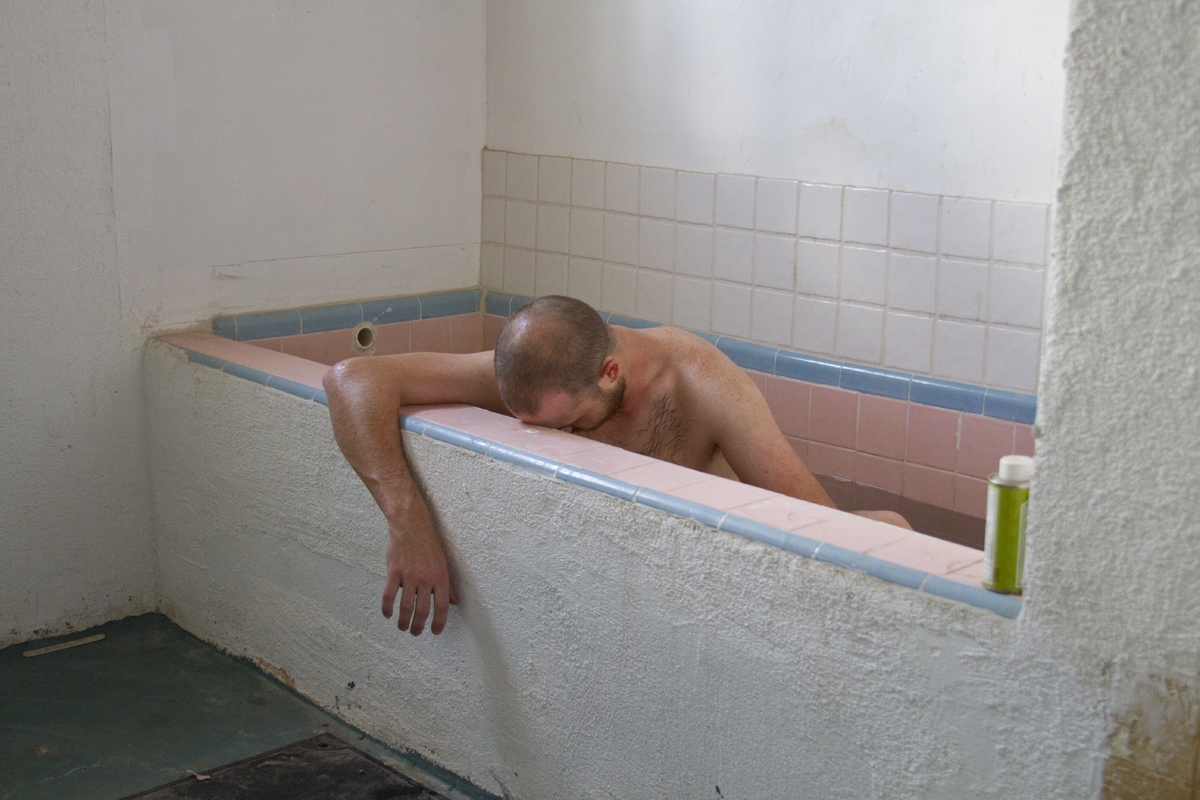




Installation of 6" tall by 70' long archival inkjet print on matte paper. 100+ digital images made from durational scans of moving video of transferred home movie footage filmed by my grandfather, Kenneth Berghuis between 1955 and 1964. * Stereo audio played within the gallery.
In 2013 I began transferring thousands of feet of 8mm home movies to digital video. My grandfather’s archive of moving images had rested in metal cases, unopened to the light of day or a projector bulb in over 25 years. My grandfather became my last surviving grandparent that year which sparked a family wide effort to engage with our material mementos in search of the ones no longer present. Hours were spent watching his films while transferring them to compact digital objectless files. I made many observations about photography, moving image, the compulsion to document ones own experience, as well as the learned behavior that is associated with being recorded. In an attempt to synthesize these observations I set out to mash up the forms and mediums that I was using to alter these constructed memories of my family history.
Scanning an LCD monitor while it was playing video of my grandfather’s films created the images that make up the scrolling print. The layering of processes is a way of introducing the complexities of family archives while allowing me to reinterpret the characters, gestures, and scenes as something more explanatory of photography. The long print pulls images from my grandfather’s films where scenes appeared still framed and subjects held themselves in place while smiling as if they were having a single still photograph made. By slowing down or speeding up the video I have control over the amount of distortion that occurs when making a flatbed scan of the monitor. As opposed to showing the static compressions of film individually, I decided that they should take on a linear form that would encompass multiple surfaces of the gallery. The long assembly of images relates the still compressions to linear time and that also implies accumulation and endlessness.
The reel-to-reel audio recording is two channel that functions much like the visual components of the installation. Stereo left we hear my grandfather reading the transcribed lists that he wrote for many of his films. Stereo right we hear him asking questions about the content of the films. The result is a visual and auditory installation that comments on the impulse of vernacular photography, the proliferation of images, mortality, memory, as well as the antiquated and contemporary methods that are predominantly used to mediate the experience of self and historical representation.








